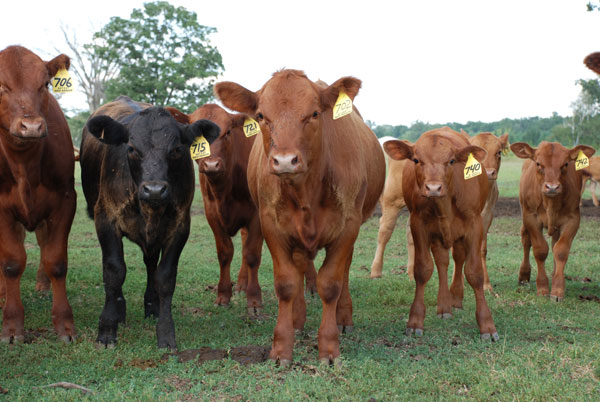“The cattle market is trying to sort out strength of beef demand and how consumers will respond to pricey beef products as more chicken and pork become available,” says Penton market analyst John Otte. “Futures markets are currently in the process of re-pricing forward fed and feeder cattle in light of the changing demand picture. In the very short term, exports remain a key wild card.”
February 20, 2015

Although tight supplies and looming grazing opportunities helped lift the cash calf and feeder cattle markets once again, bearish demand sentiment continued to pressure cash fed cattle prices and cattle futures.
Calves and feeder cattle built on the previous week’s gains, trading steady to $5 higher – instances of $10 higher on calves – according to the Agricultural Marketing Service (AMS).
Futures markets, on the other hand, shared little of the cash optimism.
Feeder Cattle futures closed an average of $4.35 lower week-to-week, corralled by eroding Live Cattle futures, which closed an average of $3.17 lower week-to-week.
Choice boxed beef cutout value gained $2.63 week-to-week, ending Friday at $240.31/cwt. Select was $3.84 higher week-to-week at $237.79.
But, cash fed cattle demand languished as folks come to grips with growing supplies of pork and poultry. That’s due to both increased production and to the ongoing trade dispute slowing exports through Pacific Coast ports.
Cash fed cattle trade was steady to $3 lower in the beef at $253-$258/cwt. Live trade was steady to $3.50 lower at $159-$160.
“The cattle market is trying to sort out strength of beef demand and how consumers will respond to pricey beef products as more chicken and pork become available,” says Penton market analyst John Otte. “Faltering fed cattle prices made projected feedlot closeouts appear dismal (see “Red ink flows for cattle feeders”). Feeder prices dropped sharply in January as feedlots were reluctant buyers of feeder cattle due to very high projected breakeven values for cattle being offered.
“Futures markets are currently in the process of re-pricing forward fed and feeder cattle in light of the changing demand picture. In the very short term, exports remain a key wild card. A better assessment of domestic demand will be possible in April and May, once consumers light their backyard grills,” Otte says.
Otte noted earlier this week that traders expected Friday's USDA Cattle on Feed report to underscore the ongoing dearth in cattle numbers. That it did, with the Feb. 1 inventory about even with a year earlier and January placements 11% less.

BEEF Seedstock 100
Looking for a new seedstock provider? Use our BEEF Seedstock 100 listing to find the largest bull sellers in the U.S. Browse the Seedstock 100 list here.
Nevil Speer, market analyst, also points to the fact that cattle futures continue adjusting to a significant loss of non-commercial interest. In his latest “Industry At A Glance” discussion, Speer notes, “The live cattle, non-commercial net long position has declined markedly in recent months. The near-term peak occurred in late-November at just slightly over 105,000 contracts; the position for the week of Feb. 10 stood at approximately 40,000 contracts. Meanwhile, on the opposite side, near-term net commercial positions peaked in November, shorting about 88,000 contracts and since declining to net short of 29,000 contracts. Accordingly, open interest has declined nearly 87,000 contracts during the same time frame.”
You might also like:
Is the New York Times naive about MARC or intentionally misleading?
7 U.S. cattle operations honored for stewardship efforts
9 lessons to make your ranching life richer
Confinement or semi-confinement cowcalf production is feasible
About the Author(s)
You May Also Like





